Bugaksan hike from Cheong Wa Dae invites visitors to once-prohibited trails
By Kim Hae-yeonPublished : Sept. 6, 2023 - 12:34
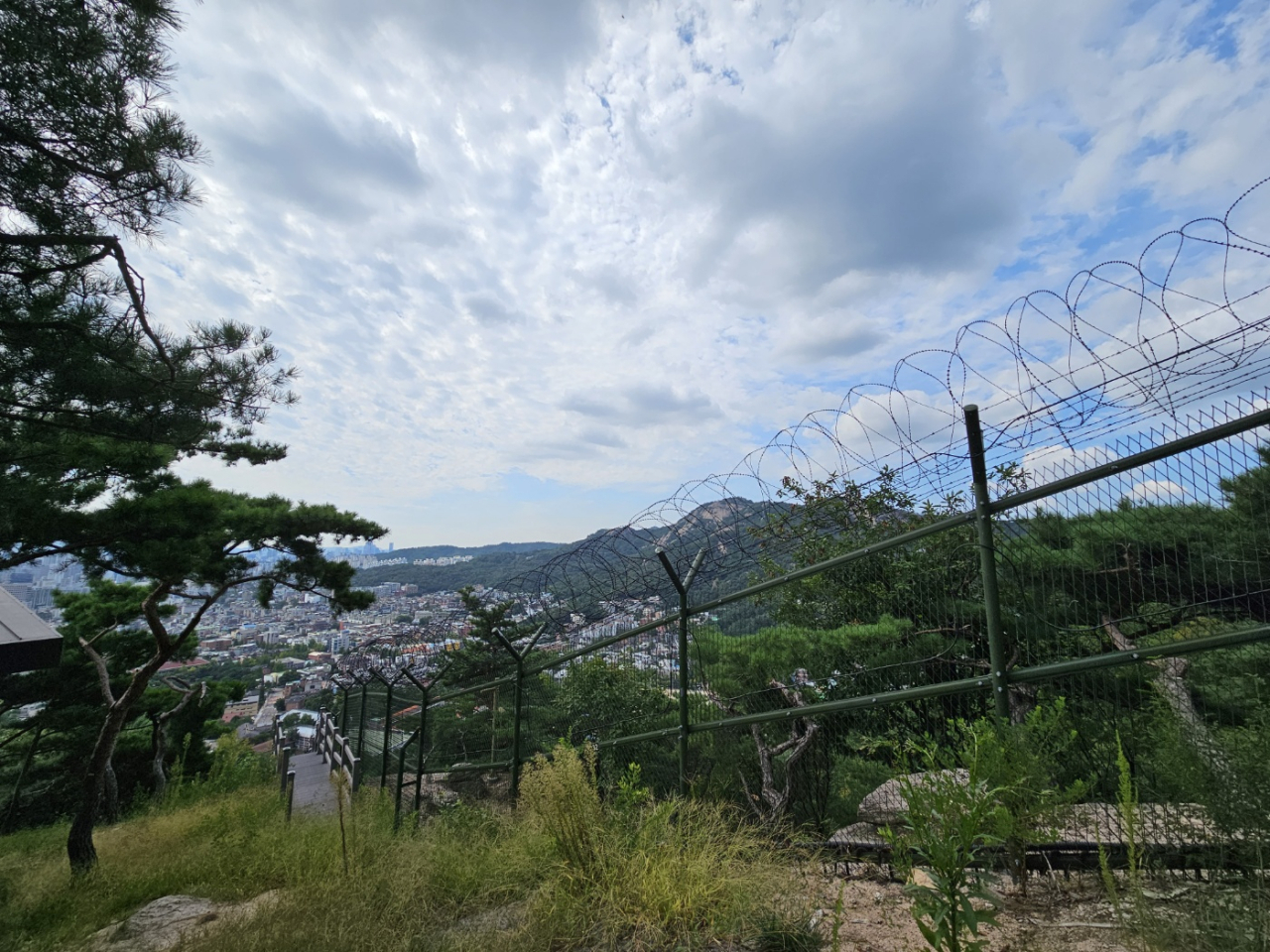
A group of participants including Second Vice Culture Minister Jang Mi-ran, mountaineer Um Hong-gil and TV personality Fabian Yoon joined forces Tuesday to introduce the previously restricted hiking trails of Cheong Wa Dae and Bugaksan.
The event, for which they were joined by some 20 international and domestic college students, was part of efforts by the Ministry of Culture, Sports and Tourism to promote trails around the former presidential office, once a tightly restricted area accessible exclusively to presidents from their residences, accompanied by their bodyguards, and often referred to as the "president's secret trail."
The particular trail originating from Cheong Wa Dae became accessible in May last year, after the presidential residence opened its doors to the public. After 31 North Korean commandos attempted to infiltrate Cheong Wa Dae on Jan. 21, 1968, access to Bugaksan was blocked for military security reasons, until partial trails were opened to the public in 2007.
The event's trail spanned approximately 3.3 kilometers and could be completed in under three hours. It extended from Cheong Wa Dae Sarangchae, passing through Baekakjeong, the Cheong Wa Dae Observatory, Daetongmun and Mansae Dongbang, climaxing at the 293-meter Cheongundae Peak. It concluded with a descent to the Cheongundae Tourist Information Center.
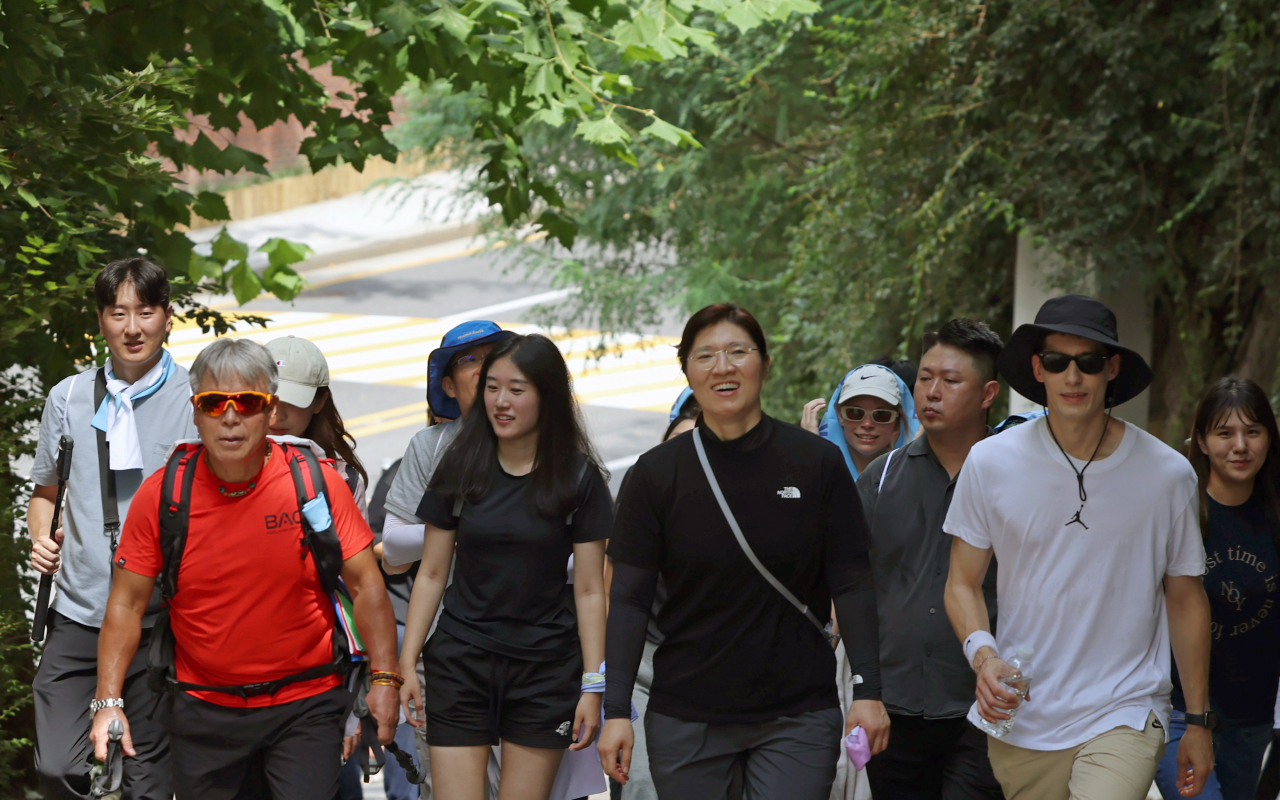
"Korea is a country with a natural environment where you can climb mountains whenever you want. I hope many people can experience the essence of K-climbing through this new hiking course that starts at Cheong Wa Dae," Jang said.
Um Hong-gil, who has devoted his life to challenging mountain expeditions worldwide, including Mount Everest, expressed his wish for all climbers to enjoy a safe and pleasurable experience in Korea. "Following the popularity of K-pop, K-content and K-food, I hope K-climbing can become the next phenomenon that foreign tourists seek to explore while in Korea," Um said.
Despite the scorching sun and a temperature soaring to 34 degrees Celsius midafternoon, participants were excited to enter through the gates and embark on trails that had been off-limits to the public for more than five decades.
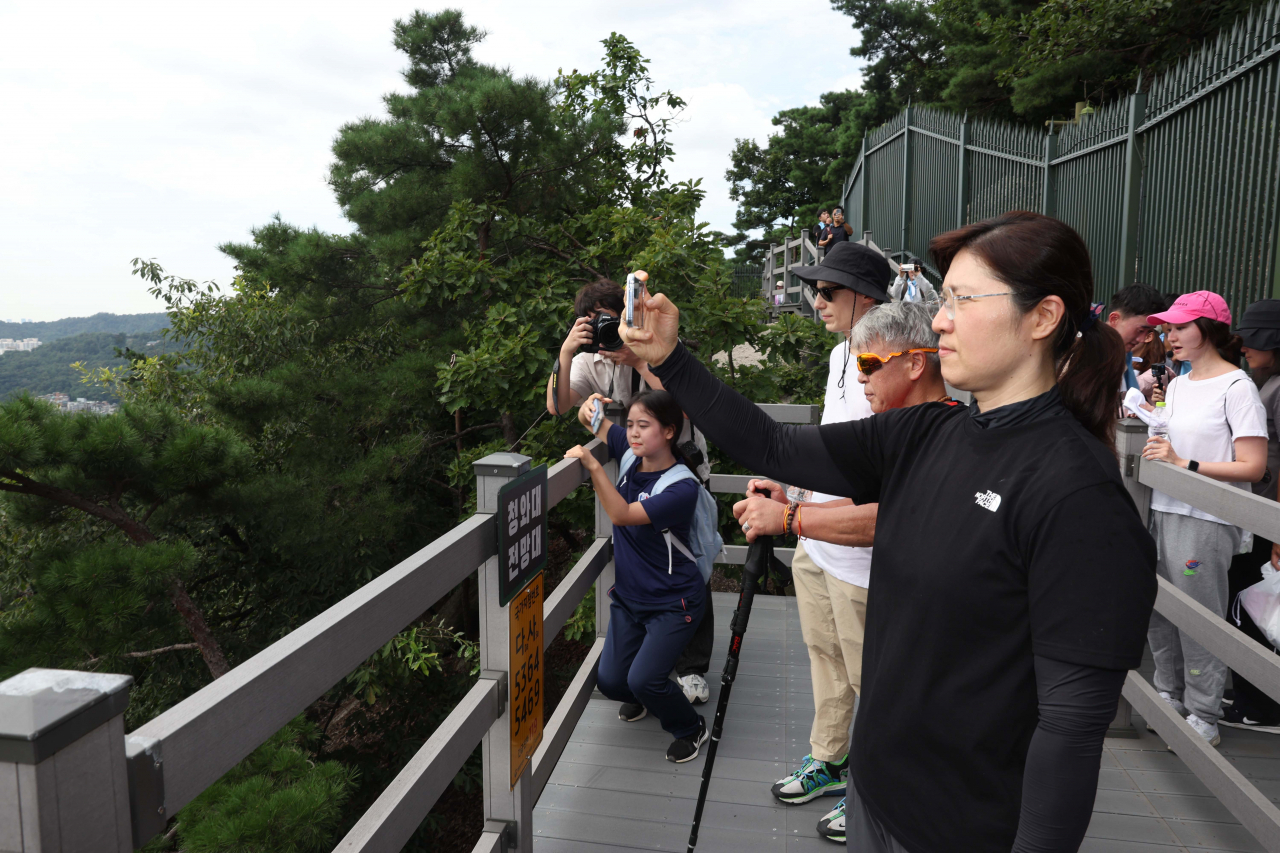
After an hourlong walk to Cheong Wa Dae Observatory, participants could witness in a single panoramic view 600 years of history, spanning from the Joseon era to contemporary Korea, all under a clear blue sky.
"Due to its long-standing restrictions, Bugaksan earned its nickname, ‘the DMZ of the city,' implying that nature remained largely untouched by humans," a hiking guide at the event explained.
The guide highlighted that foreign tourists surveyed in Seoul often cite the convenience of accessing mountains within walking distance or via public transportation as one of the primary attractions.
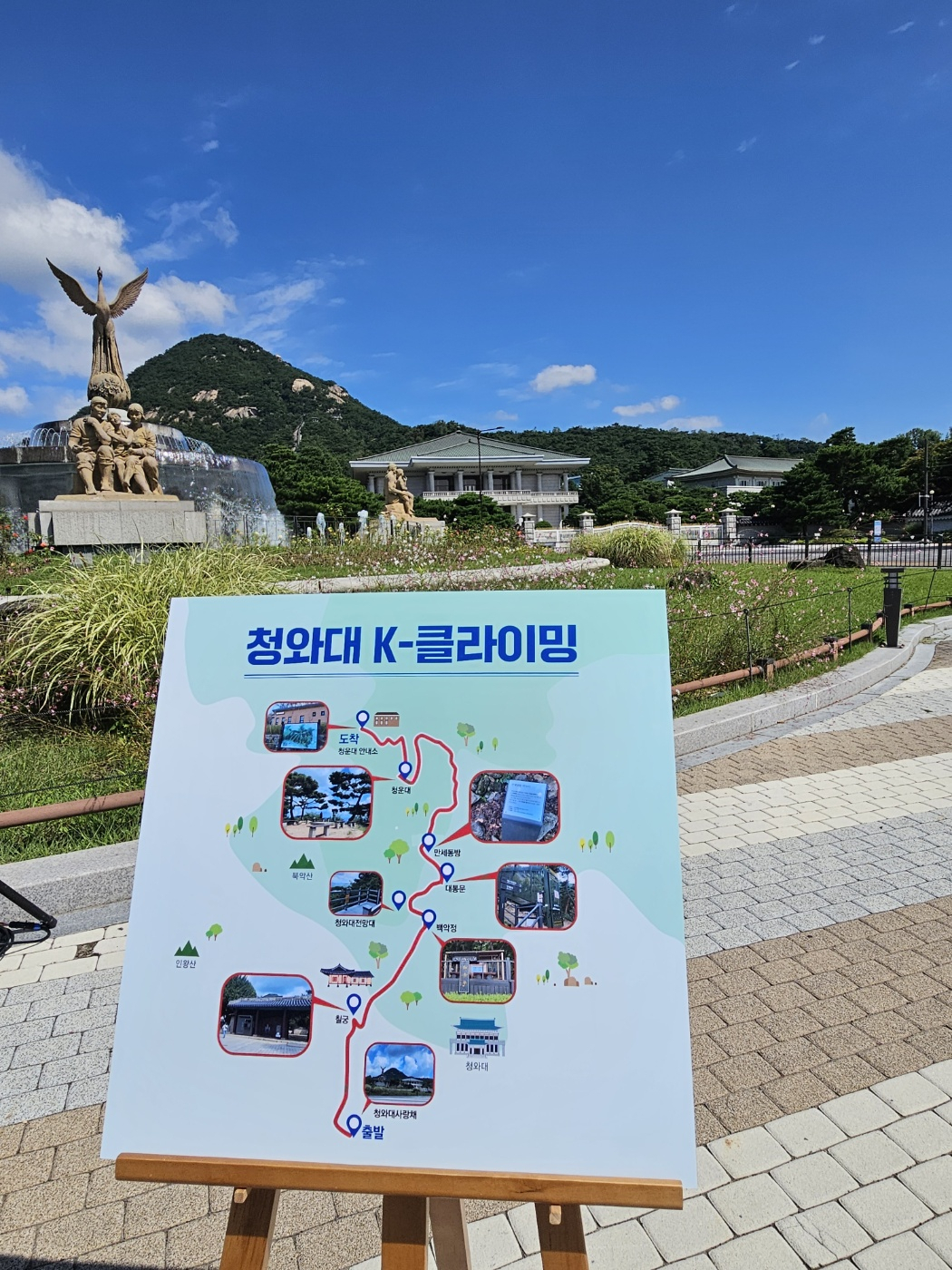
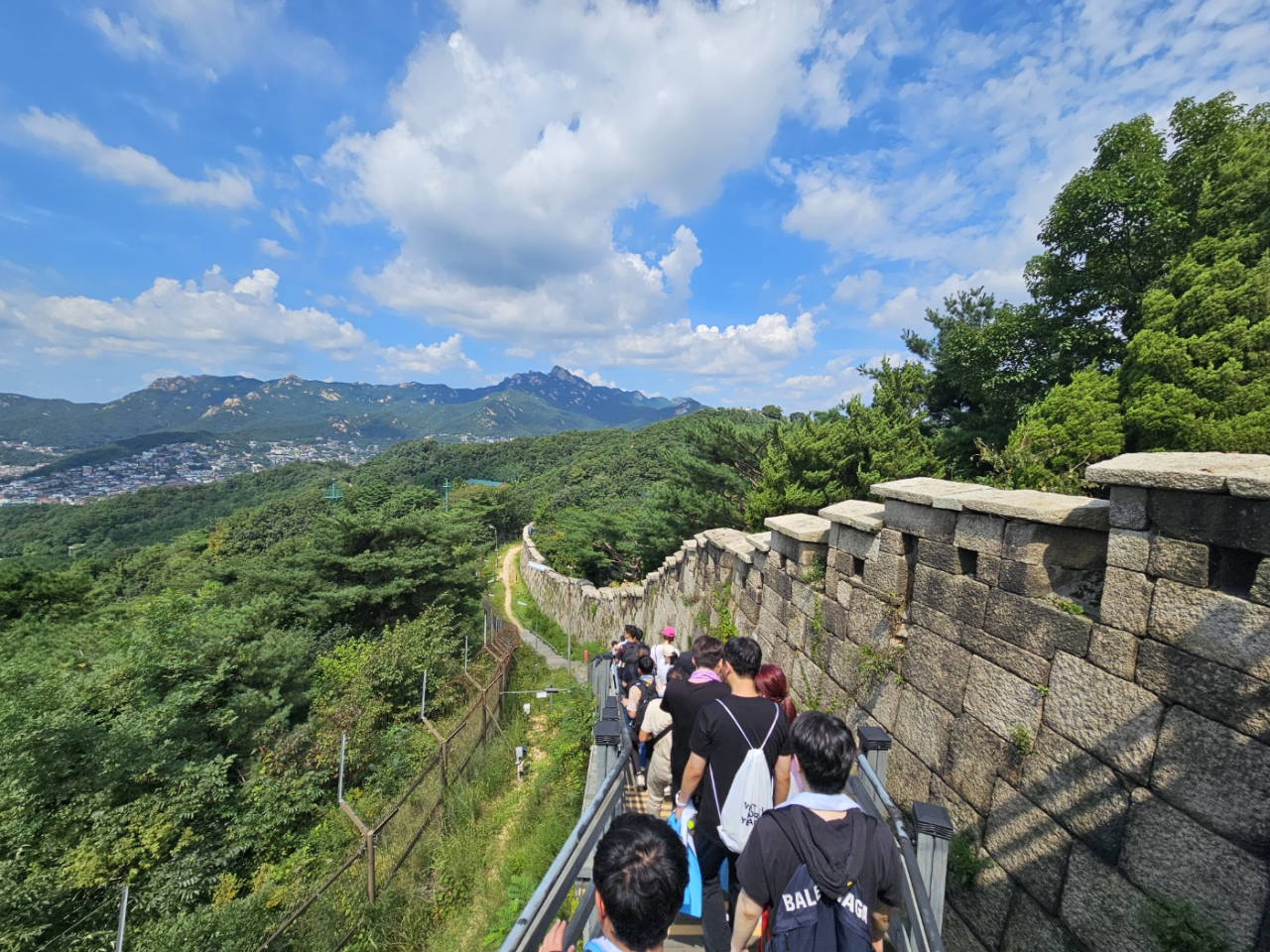
"This event offers us to delve into Korea's history through viewing the former presidential office, while also getting to immerse ourselves in the beauty of mountains and nature," Valeria Strungaru, a graduate student from Moldova specializing in tourism management at Gachon University who participated in the event, told The Korea Herald.
Upon reaching Cheongundae Peak, Zin Win Thu, a Konkuk University student from Myanmar, commented on the easily accessible routes. "Although I am very exhausted since I have not climbed mountains in a while, the trails are conveniently set up and easy to navigate," Thu said.
While hiking, remnants of barbed wire fences and disused Army posts remained visible in some sections, serving as a reminder of how military patrol paths have transformed into recreational trails.
The Culture Ministry plans to introduce various K-climbing trails that can be enjoyed in the Cheong Wa Dae area by next year, along with the inclusion of new tourism destinations to enhance hikers' experience.












![[Kim So-hyun] The quiet taxi driver from Paris](http://res.heraldm.com/phpwas/restmb_idxmake.php?idx=644&simg=/content/image/2024/04/25/20240425050891_0.jpg&u=)







